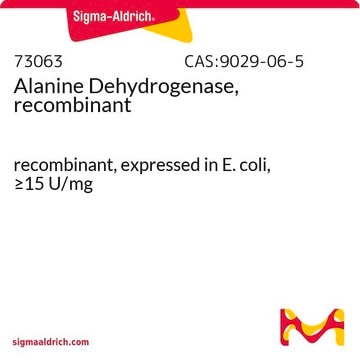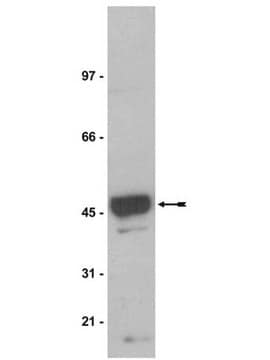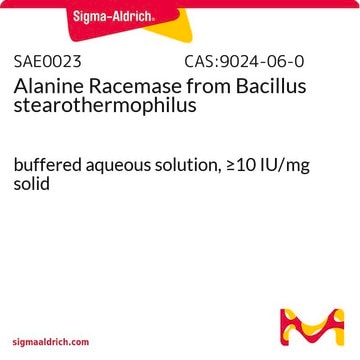A7189
L-Alanine Dehydrogenase from Bacillus subtilis
ammonium sulfate suspension, ≥20 units/mg protein (Lowry)
Synonyme(s) :
L-Alanine: NAD+ oxidoreductase (deaminating)
Sélectionner une taille de conditionnement
408.00 CHF
Sélectionner une taille de conditionnement
About This Item
408.00 CHF
Produits recommandés
Source biologique
Bacillus subtilis
Niveau de qualité
Forme
ammonium sulfate suspension
Activité spécifique
≥20 units/mg protein (Lowry)
Température de stockage
2-8°C
Vous recherchez des produits similaires ? Visite Guide de comparaison des produits
Description générale
Application
Actions biochimiques/physiologiques
Définition de l'unité
Forme physique
Code de la classe de stockage
12 - Non Combustible Liquids
Classe de danger pour l'eau (WGK)
WGK 2
Point d'éclair (°F)
Not applicable
Point d'éclair (°C)
Not applicable
Équipement de protection individuelle
Eyeshields, Gloves, multi-purpose combination respirator cartridge (US)
Faites votre choix parmi les versions les plus récentes :
Certificats d'analyse (COA)
Vous ne trouvez pas la bonne version ?
Si vous avez besoin d'une version particulière, vous pouvez rechercher un certificat spécifique par le numéro de lot.
Déjà en possession de ce produit ?
Retrouvez la documentation relative aux produits que vous avez récemment achetés dans la Bibliothèque de documents.
Articles
Instructions for working with enzymes supplied as ammonium sulfate suspensions
Active Filters
Notre équipe de scientifiques dispose d'une expérience dans tous les secteurs de la recherche, notamment en sciences de la vie, science des matériaux, synthèse chimique, chromatographie, analyse et dans de nombreux autres domaines..
Contacter notre Service technique








